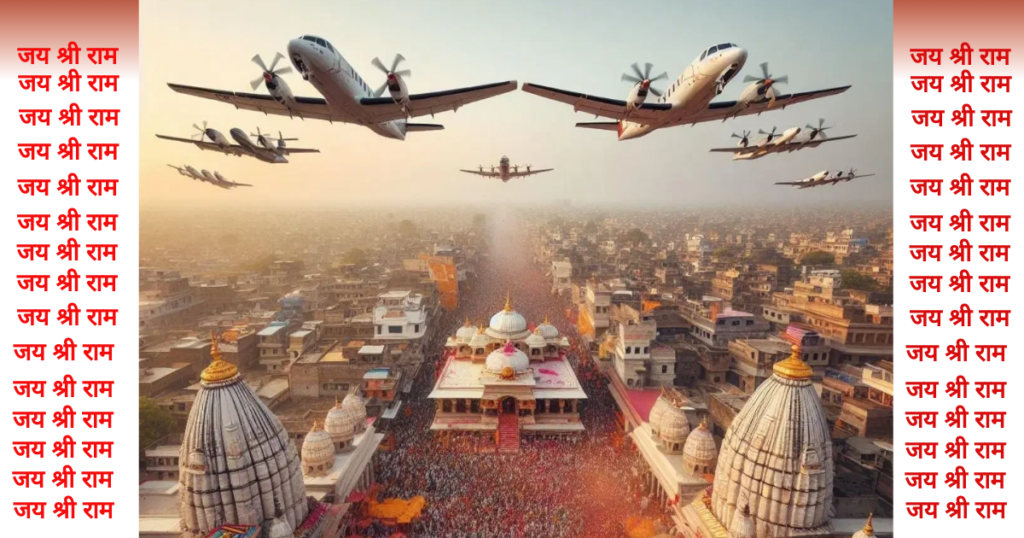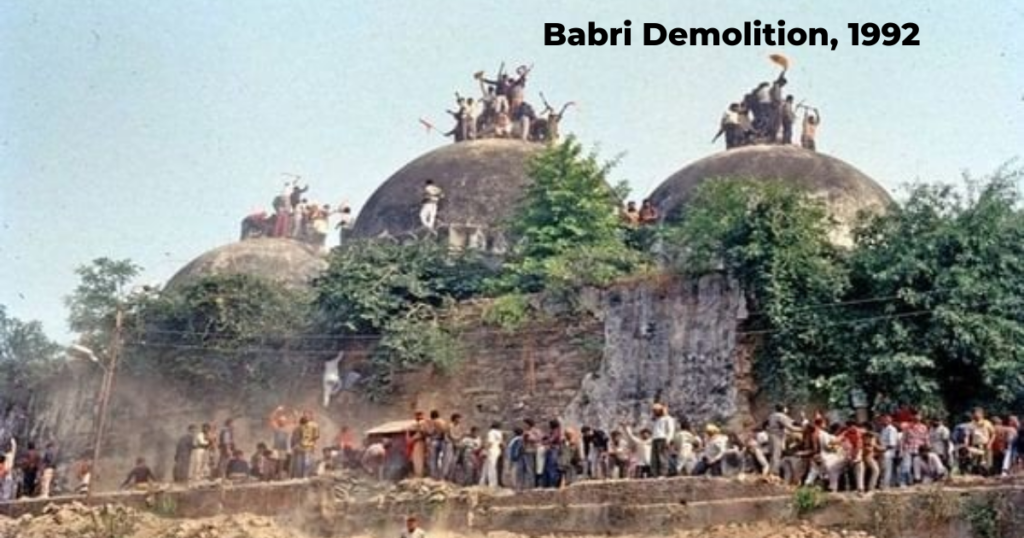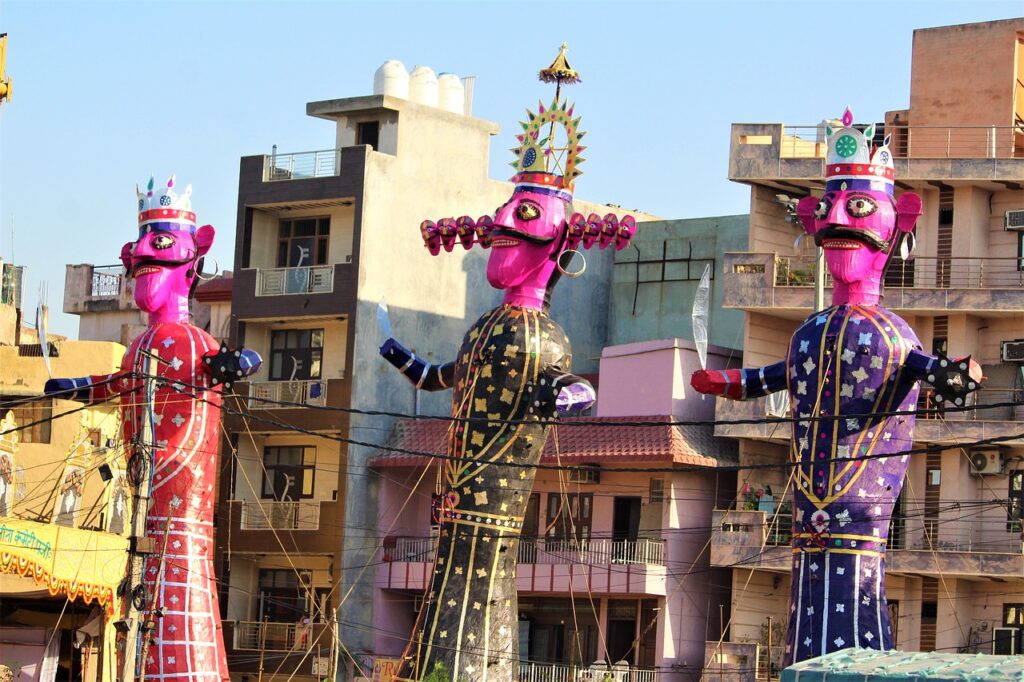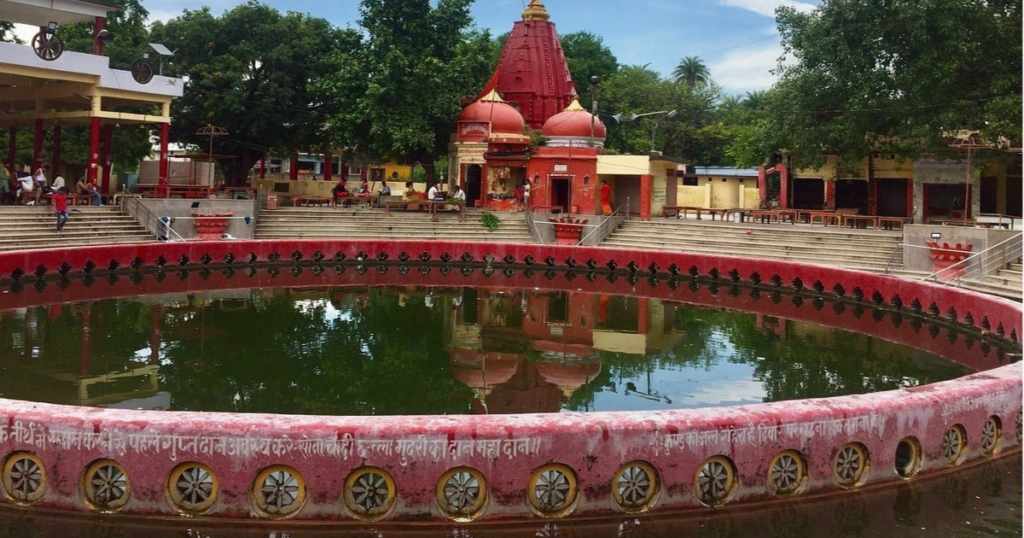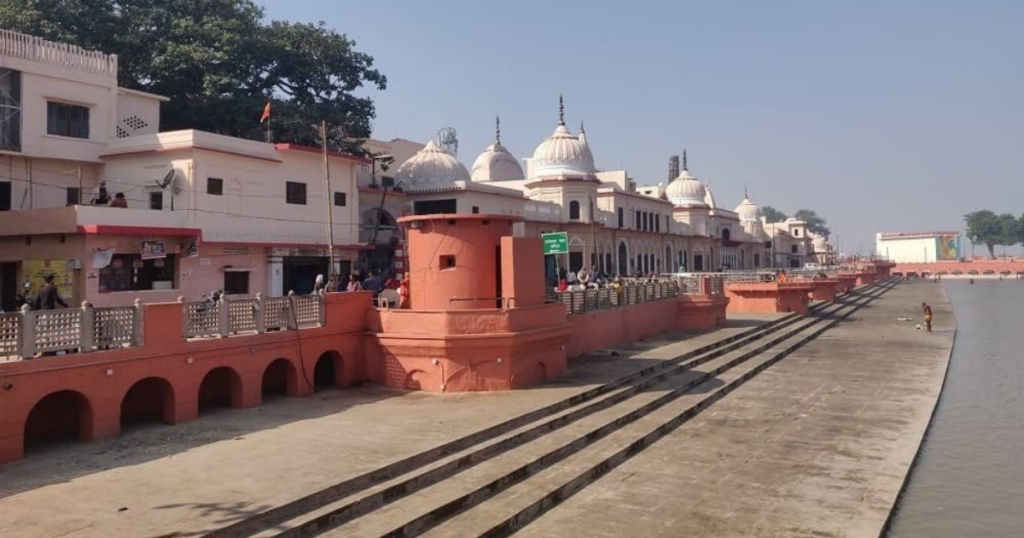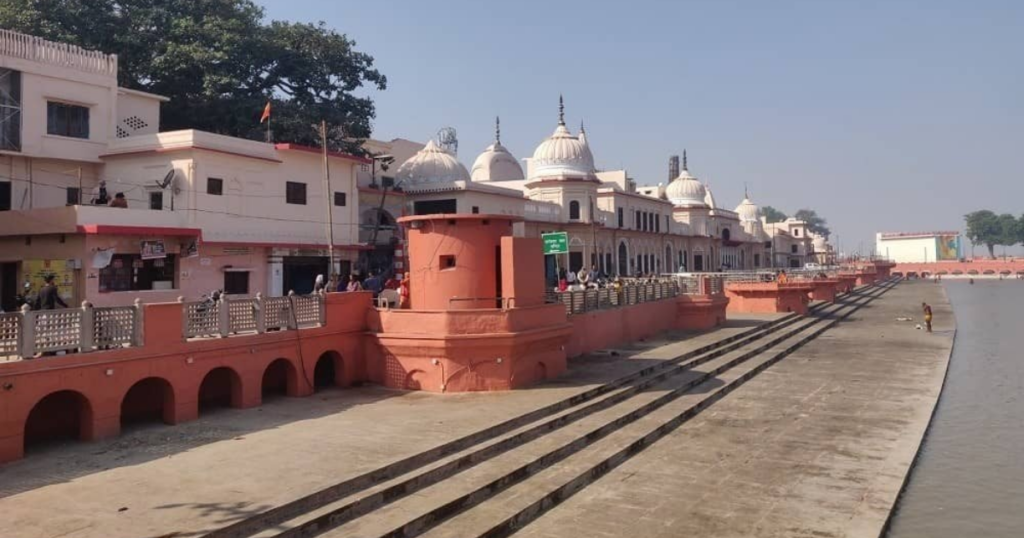A Sky Full of Charters and a Controversial Consecration
The opening of India’s holy city Ayodhya’s grand temple dedicated to Lord Ram has stirred both fervor and dissent. About 80 chartered flights descended upon the newly inaugurated international airport, setting the stage for a monumental event in Hinduism. However, the controversy surrounding the temple’s construction looms large, with political leaders shunning the consecration, citing concerns about India’s secular identity.
The Legend of Ram: Ayodhya’s Sacred Abode
1.1 The Mythical Birthplace
Ayodhya’s new temple is poised to be the sacred abode of Lord Ram, a revered deity in Hinduism. According to Hindu beliefs, Lord Ram was born at the exact site where the temple now stands.
1.2 Temple’s Magnificence Unveiled
Spread over 7.4 acres, the temple, still under construction, is a testament to architectural grandeur. Crafted with pink sandstone and adorned with intricate carvings, the structure boasts 46 doors, 42 of which will be gilded, adding to its opulence. Anil Mishra, a trust member overseeing the construction, emphasizes the fusion of traditional design and cutting-edge technology.
1.3 Consecration Ceremony and Public Access
The consecration ceremony, marked by the ritual of “Pran Pratishtha,” aimed at imbuing life into the deity’s idol, precedes the temple’s opening to the public. Post-ceremony, an estimated 100,000 devotees are expected to visit daily.
Ayodhya’s Transformation: Past and Present
2.1 Facelift for the Holy City
Ayodhya, known for its narrow lanes and devout pilgrims, has transformed with modern infrastructure and services. The once modest airstrip has evolved into a sprawling international airport, and the railway station now accommodates 50,000 passengers daily.
2.2 The Spiritual Significance
Ravi Singh, a representative of the Indian Hotels Company Limited, highlights Ayodhya’s historical and spiritual significance, anticipating a surge in demand as it becomes a compelling destination.
The Controversial Backdrop: Ayodhya’s Turbulent History
3.1 Center of Political Strife
Ayodhya’s history is entwined with India’s political turmoil, marked by the Hindu majoritarian quest to reclaim its religious past. The demolition of the Babri mosque in 1992 intensified the religious divide, leading to a prolonged legal battle.
3.2 Modi’s Unprecedented Fusion
Prime Minister Modi’s leadership in blending religion and politics is unprecedented. The temple’s groundbreaking ceremony in 2020 and the current consecration are seen by critics as a political strategy to mobilize Hindu voters ahead of the general election.
3.3 Opposition’s Stand
Most opposition leaders have declined the temple’s inauguration invitation, condemning its use for political campaigning. Critics argue that the event undermines India’s constitutionally secular stance.
A Chronicle of Ayodhya’s Turmoil: Historical Milestones
- 4.1 Babri Masjid’s Origin (1528)
The Ram Temple movement traces back to the construction of the Babri Masjid in 1528 by Mir Baqi, leading to decades of debates and clashes.
- 4.2 Maratha Claim (1751)
The Marathas’ claim for control over Ayodhya, Kashi, and Mathura set the stage for contentions that persisted over the years.
- 4.3 Nihang Sikhs’ Demand (1858)
Nihang Sikhs’ attempt to claim Babri Masjid as Lord Ram’s birthplace marked the beginning of the struggle for control.
- 4.4 Legal Claim and British Intervention (1885)
Raghubar Das filed the first legal suit in 1885, seeking permission to build a temple, setting a legal precedent.
- 4.5 ‘Ram Lalla’ Idols Inside Babri Masjid (1949)
The placement of ‘Ram Lalla’ idols in 1949 intensified religious sentiments, leading to legal battles over ownership.
- 4.6 Legal Quagmire (1950-1959)
The subsequent decade witnessed a surge in legal suits, deepening the legal quagmire over the disputed site.
- 4.7 Babri Masjid Locks Opened (1986-1989)
The controversial opening of Babri Masjid locks in 1986 fueled tensions and became a pivotal moment in the narrative.
- 4.8 Rath Yatra and Failed Demolition Attempt (1990)
L.K. Advani’s Rath Yatra in 1990 aimed to mobilize support for the temple, despite a failed demolition attempt.
- 4.9 The Infamous Demolition (1992)
The climax in 1992 witnessed the demolition of the Babri Masjid, changing Indian politics forever.
- 4.10 Post-Demolition Riots (1993-1994)
Communal riots erupted post-demolition, prompting the government’s acquisition of the disputed area.
- 4.11 ASI’s Excavation and Allahabad High Court Hearing (2002-2003)
The Archaeological Survey of India’s excavation in 2002 claimed evidence of a Hindu temple, further prolonging the legal battle.
- 4.12 Liberhan Report Submission (2009-10)
The Liberhan Commission’s report in 2009 implicated key leaders, but the legal disputes persisted.
- 4.13 Supreme Court’s Historic Judgment (2019)
In 2019, the Supreme Court awarded the disputed land to Hindus, bringing a semblance of resolution.
- 4.14 Ram Temple Foundation Stone (2020)
Prime Minister Modi laid the foundation stone in 2020, paving the way for the temple’s construction.
- 4.15 PM Modi Inaugurates The Ram Temple (2024)
In a historic moment on January 22, 2024, PM Modi led the consecration ceremony, marking the culmination of a 500-year dispute.
Celebrate Festivals at Ram Mandir, Ayodhya: A Cultural Odyssey
Ayodhya, the sacred city, offers a rich tapestry of cultural celebrations, making it a vibrant destination for pilgrims and tourists alike. Here’s a glimpse into the festivities and the enchanting places to explore in this revered city.
- Ram Navami: Commemorating Lord Ram’s Birth
Ram Navami, a festival celebrating the birth of Lord Ram, transforms Ayodhya into a hub of joyous festivities. Pilgrims from far and wide gather to participate in processions, bhajans, and other cultural events, creating a spiritual ambiance.
- Dussehra: Victory of Good Over Evil
Dussehra, symbolizing the triumph of good over evil, is celebrated with grandeur in Ayodhya. The city resonates with the echoes of Ram Leela performances, portraying the epic Ramayana, and the effigies of Ravana, Meghnad, and Kumbhakarna are set ablaze, marking the victory of Lord Ram.
- Diwali: Ayodhya’s Illuminated Splendor
Diwali, the festival of lights, takes on a special significance in Ayodhya. The entire city dazzles with diyas and colorful decorations. Pilgrims throng to witness the grand illumination, adding a celestial glow to the sacred atmosphere.
Places to Visit in Ayodhya: Beyond the Temples
Hanumangarhi: A Spiritual Oasis
Hanumangarhi, perched on a hill, offers panoramic views of Ayodhya. Devotees flock to this temple dedicated to Lord Hanuman, seeking blessings and solace.
Srichandrahari Temple: Tranquil Devotion
Srichandrahari Temple, nestled amidst serene surroundings, provides a peaceful retreat for devotees. The tranquil ambiance enhances the spiritual experience.
Shri Nageshwarnath Temple: Ancient Marvel
Shri Nageshwarnath Temple, with its historical significance, stands as a testament to Ayodhya’s rich cultural heritage. Pilgrims marvel at its architectural grandeur and sacred ambiance.
Sitakup Tirtha: Symbol of Devotion
Sitakup Tirtha, associated with Goddess Sita, holds deep symbolic significance. Pilgrims come to pay homage to the revered goddess and absorb the spiritual energy of the place.
Mattagajendra: A Cultural Gem
Mattagajendra, with its cultural significance, is a place where traditions and spirituality converge. The vibrant atmosphere during festivals makes it a must-visit destination.
Naya Ghat: Riverside Serenity
Naya Ghat, along the banks of the river, offers a serene escape. Pilgrims can engage in rituals and immerse themselves in the tranquility of the surroundings.
Ram ki Paidi: Bathing Ghats of Bliss
Ram ki Paidi, the bathing ghats on the Sarayu River, holds immense spiritual importance. Devotees take a dip in the holy river, believing it purifies the soul.
Raj Sadan: Architectural Marvel
Raj Sadan, an architectural marvel, showcases Ayodhya’s cultural heritage. Visitors can explore the intricate designs and learn about the historical significance of the place.
Saptsagar Tirtha: Sacred Ponds
Saptsagar Tirtha, a collection of seven sacred ponds, adds to Ayodhya’s spiritual charm. Pilgrims visit these ponds for ritualistic purposes, immersing themselves in the divine aura.
Devkali: Divine Tranquility
Devkali, a site of divine tranquility, attracts those seeking solace and spiritual rejuvenation. The peaceful surroundings make it an ideal place for meditation and introspection.
Ayodhya, beyond its grand temples, beckons with a cultural richness that resonates through its festivals and sacred sites. Each place narrates a tale of devotion, making Ayodhya a destination that transcends the boundaries of time.
A Melding of Faith and Politics
The Ram Temple’s inauguration in Ayodhya is a convergence of faith and politics, reflecting the complex tapestry of India’s history. As the country witnesses this historic ceremony, it’s essential to acknowledge the myriad controversies and struggles that have shaped Ayodhya’s narrative.
FAQs: Unraveling the Intricacies
Q1: Why are opposition leaders boycotting the temple’s opening?
Opposition leaders argue that the event is being used for political campaigning by Modi’s party, undermining India’s secular principles.
Q2: What is the historical significance of Ayodhya?
Ayodhya holds historical and spiritual importance, being the mythical birthplace of Lord Ram.
Q3: How did the legal battles shape the Ram Temple’s construction?
Decades of legal battles culminated in the Supreme Court awarding the disputed land to Hindus in 2019.
Q4: What role did the Babri Masjid demolition play in India’s politics?
The 1992 demolition intensified religious divides and changed the political landscape of India.
Q5: What is the significance of PM Modi’s role in the temple’s inauguration?
PM Modi’s leadership has been instrumental in the temple’s construction, reflecting a fusion of religion and politics.
